The praying mantis might look a little intimidating at first, but they are the perfect beneficial insect to attract to your garden space!
While they are technically called “mantids,” most individuals know this insect as the specific species name “mantis.” Praying mantises are carnivorous insects that feast on all sorts of garden pests and insects, making them great friends of the garden.
Praying mantises feature triangular heads and long, thin bodies. They are a mixture of green and brown colors and can often blend in quite well with their surroundings. The name “praying” refers to the insect’s appearance when they are in a state of waiting to attack – their front legs are joined together as if they were in prayer.
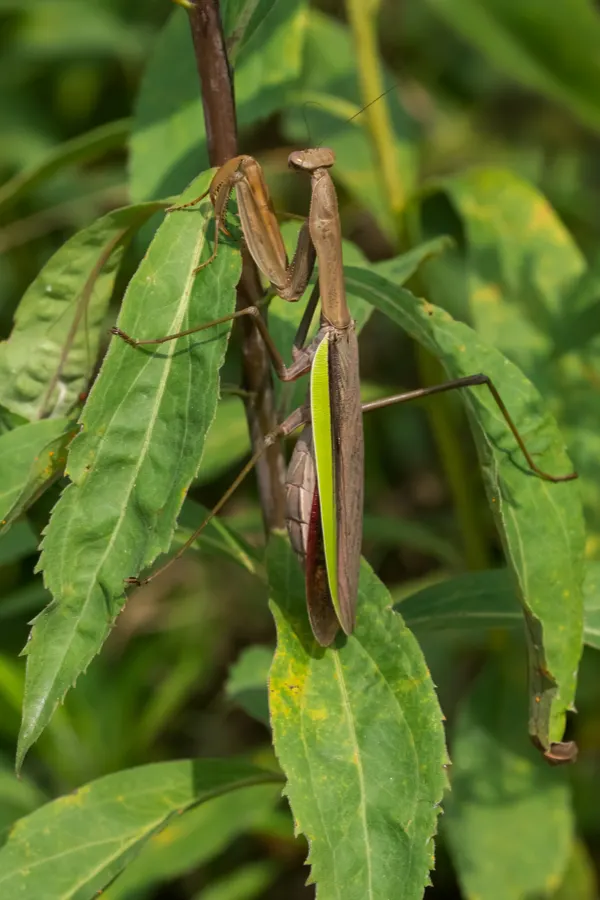
But don’t let their calm demeanor and appearance fool you! With their amazing eyesight that allows them to detect movement around 60 feet away, and their ability to turn their heads 180 degrees in each direction, they are master hunters! Thankfully, some of their favorite snacks are the pests that plague vegetable garden crops.
The Lifecycle – How To Attract Praying Mantis
Praying mantises only live for one season. During the late summer, the males and females mate. Then, the female mantis lays a sack of eggs called an “ootheca.”
This frothy casing can contain up to 200 eggs each. The casing will harden during the wintertime to help keep the eggs protected. You can often find these casings on branches, fence posts, or protected areas on buildings.
After laying the eggs, the adults die off. (And yes, it is true that females will sometimes eat males after or during mating!) In the spring, the eggs will hatch, releasing hundreds of tiny praying mantises into the wild. These babies will quickly grow into adults and the cycle repeats again.
Adult praying mantis can range in size from as small as half an inch all the way up to 8 inches long, depending on the species. The most common species are between 1 to 3 inches, however. Most adult species do have the ability to fly, but some females cannot.
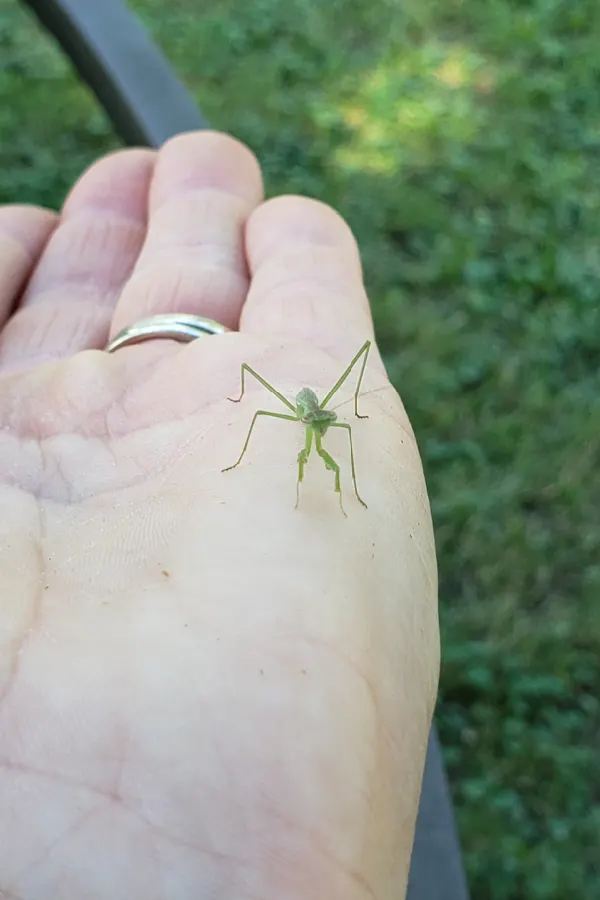
What & How They Eat – How To Attract Praying Mantis
Praying mantises are ambush predators. Young mantis will feed on soft-bodied insects like mosquitoes, caterpillars, flies, and the infamous garden enemy – aphids. Adult mantis go after larger insects like grasshoppers, crickets, beetles, spiders, and even moths.
The larger praying mantid species can even feast on lizards, small tree frogs, mice, and hummingbirds. If they get really desperate for food, they might even try to eat one another!
Mantis will sit patiently in their “praying” stance until an insect lands nearby. Once they do, they quickly strike at their prey before they even realize what happened. They can do this because they have shorter front legs with rows of tiny, overlapping spikes. These spikes help to hold their prey after capturing.
While not all of the insects and pests they dine on are enemies of the garden, they are still extremely beneficial to have around. Luckily, there are a few ways to help make sure you can attract praying mantis to your garden space while still allowing the beneficial insects to thrive as well.
How To Attract Praying Mantis
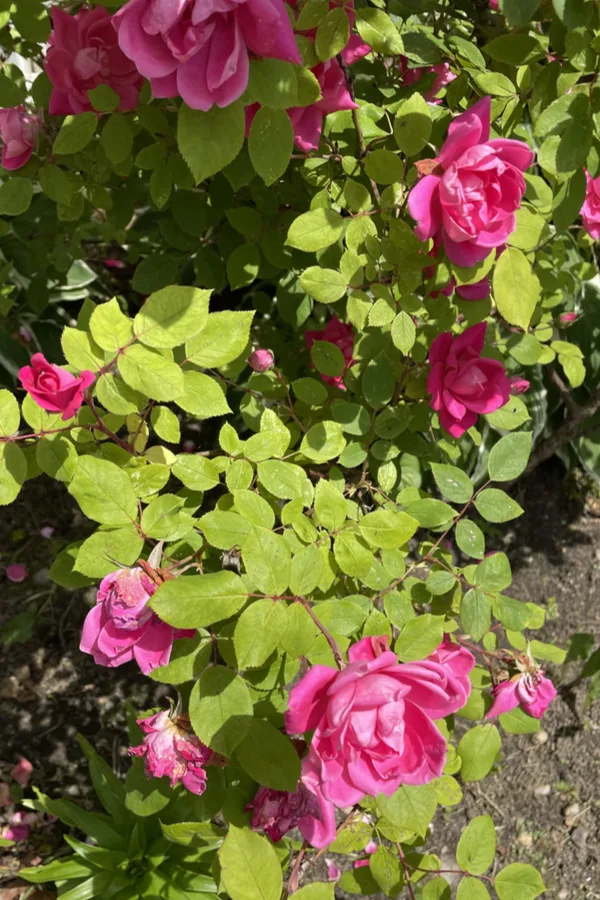
Overall, praying mantises are very beneficial vegetable garden predators. They help to naturally keep the unwanted bug population in control. This, in turn, helps to keep your vegetable plants from being an easy target from pests.
In order to help persuade mantis to visit your garden, here are some great tips to keep in mind:
If You Grow It, They Will Come – How To Attract Praying Mantis
Praying mantises will go where their food source is. Make sure to include crops in your garden that their favorite prey enjoys dining on. Adding in some flowering bushes like everblooming roses or raspberry bushes will help to attract many different varieties of creepy-crawly creatures.
Native plants and grasses are also perfect for attracting praying mantises to your garden area. These plants are easy to grow because they adapt well and require little care. Check local garden centers or even your local extension office for a list of native plants for particular your area.
Not only can native crops provide some protection and hiding places, but they are also good for harboring many different species of insects praying mantises enjoy eating. Tall grasses are particularly good choices.
Plant Shrubbery – How To Attract Praying Mantis
Be sure to include shrubbery near or surrounding your vegetable garden to help attract female praying mantises to your property. Shrubs contain lots of branches and dense foliage that helps to not only hide praying mantises but also provide the females a great place to lay their eggs.
Even though the praying mantis is a predator of insects, smaller species are also prey to birds, lizards, frogs, snakes, and spiders. Having shrubs nearby gives the mantis a safe place to hide.
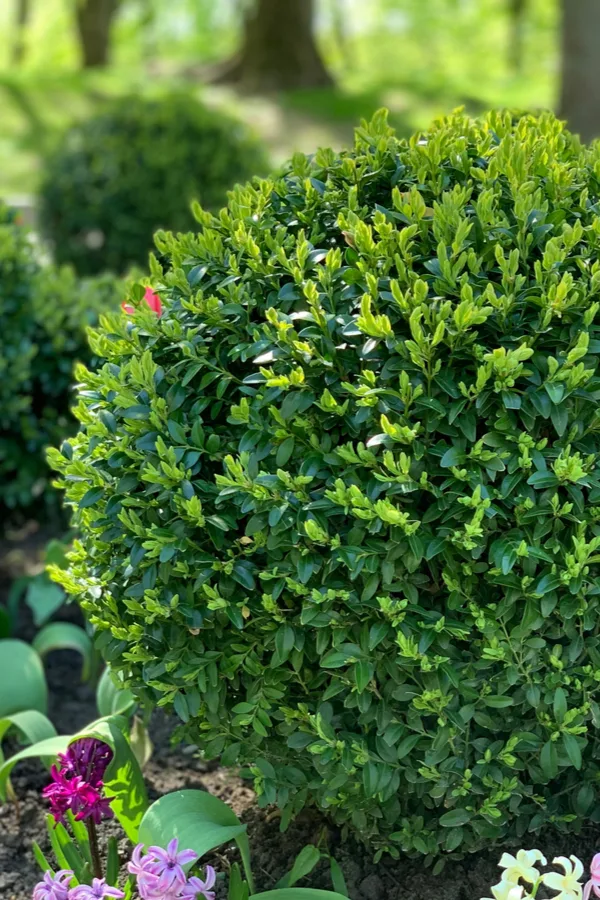
There are many different options of shrubs that you can choose from. Evergreen options are the best choices since they give mantises protection all year long. Boxwood, azaleas, rosemary, gardenia, and rhododendrons are all good selections.
These shrubs will add year-round interest to your property in addition to providing safe places for praying mantises to live and hide.
In addition to shrubs, low-lying plants also help to provide praying mantises with hiding places. Hostas are excellent for shadier areas of your garden or landscape. Thyme and oregano are great herbs that not only benefit your kitchen dishes but also help hide praying mantises, too.
Provide Hydration – How To Attract Praying Mantis
As with all living things, praying mantises need water in order to survive. Fill a small dish or bowl with small rocks or pebbles. Add just enough water to cover the majority of the rocks. Keep the dish in your garden area next to their favorite hiding places.
Replace the water often, especially on warm days. You will likely see all sorts of insects taking advantage of the new local watering hole.
Avoid Pesticides
Most pesticides will not only kill the unwanted pests in your garden but all of the beneficial ones as well. This includes bees, butterflies, ladybugs, and praying mantises.
Practice natural ways of controlling insects and pests in your garden instead. In addition to attracting praying mantises, grow plants that attract ladybugs and parasitic wasps – both insects that will kill many unwanted insects.

Also, use companion planting to help deter unwanted insects by using plants they hate to be around. Lastly, rotate crops yearly to ensure plant-related pests don’t increase in number each year.
Find and Relocate – How To Attract Praying Mantis
If you happen to come across an adult praying mantis somewhere else on your property, they are relatively easy to relocate to your vegetable garden.
Gently coax the adult onto a long stick and slowly walk it to your desired spot. Choose a place in your garden that is off the ground and is well hidden. The praying mantis will likely stay in the same area of your garden as long as there are plenty of insects for it to feast on.
If you come across an egg casing, cut the branch or twig down, leaving a few inches on each side of the sack. Transfer it to your garden location. Tie the twig to a secure branch that is off the ground, protected, and out of the way of danger. The eggs should hatch in spring once the weather warms up.
Purchasing Praying Mantises
When all else fails and you are still struggling to attract praying mantises to your vegetable garden, consider purchasing them. You can often purchase egg cases from local garden centers or even online suppliers.
Once you purchase the cases, store them for a week or so in your refrigerator until the outside temperatures have warmed enough in the spring for hatching. Do NOT place them in the freezer.
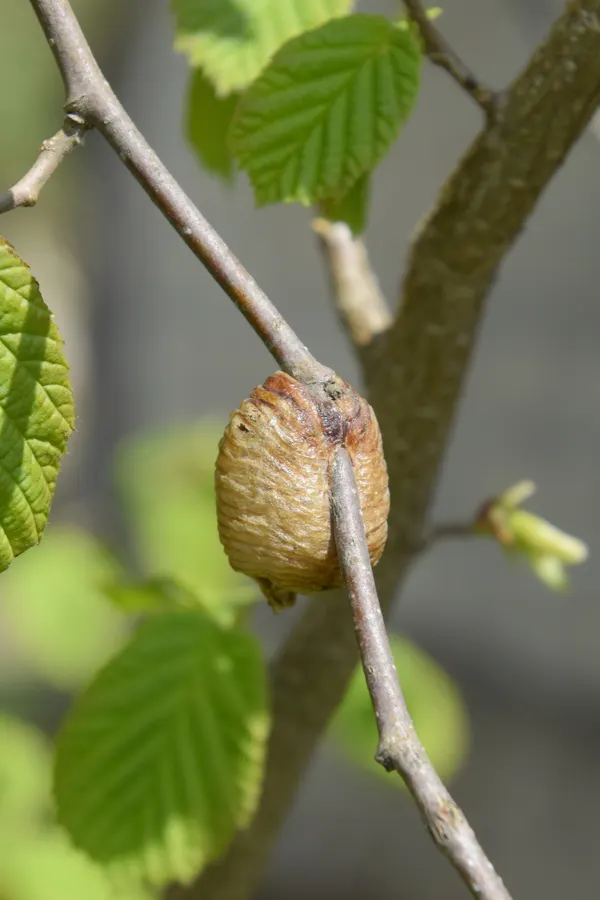
Attach the case to a branch or stick that is well hidden by foliage and off the ground. Avoid placing the case on the ground because ants will eat newly hatched praying mantises. If temperatures are warm enough, the eggs should hatch after about two weeks.
When To Avoid Attracting Praying Mantis
Most vegetable gardens can benefit from the addition of praying mantises. However, you might want to avoid attracting them if you have specific pollinator or butterfly gardens. In addition to the unwanted insects, praying mantises will also eat butterflies, bees, and even hummingbirds, especially if that is their only available food source.
If you happen to see a praying mantis around your butterfly garden, you can easily relocate it to your vegetable patch instead. In addition, be sure to keep hummingbird feeders up and away from shrubbery and other places where praying mantises might be lurking. While it is rare, larger mantids won’t shy away from making one their next meal.
To Conclude . . .
While these mighty warriors might not be perfect for every garden situation, praying mantises are definitely helpful in the fight against vegetable garden pests! And, as an added bonus, they sure are fun to find and watch!
Follow Our Facebook Page For Even More Great Tips! Simple Garden Life Facebook Page
Simple Garden Life is a website dedicated to keeping gardening fun, simple and enjoyable! We publish two new articles each week along with a new garden podcast episode every two weeks. This article may contain affiliate links.
